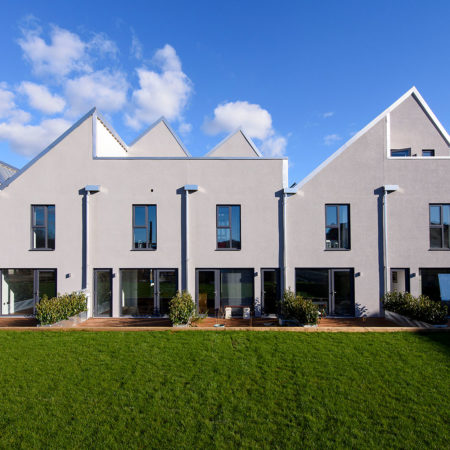As We Scale Up House Building, We Mustn’t Forget Whole-Life Sustainability
With a bit of planning and foresight, the homes we build in the coming years could play an integral part in the UK achieving zero carbon status. The converse is also true. We could be making the task harder by not properly accounting for sustainability factors in the way that homes are designed and built.
A large part of the sustainability focus is on the energy use in service. That is, the energy new homes will consume during occupation and the greenhouse gas emissions this will create. This is important; but it overlooks several major contributors to CO2 emissions that occur before and during construction and at the end of life.
Extracting, processing and transporting the materials that go into traditional house building is energy-intensive. Where these processes involve fossil fuels (which they usually do), it inevitably leads to greenhouse gas emissions – these are irreversible. This is why it’s referred to as embodied carbon.
At the end of the building’s life, we might be left with a structure that isn’t easily dismantled and which is difficult to recycle. Again, there is an energy and emissions cost to be paid that shouldn’t be ignored.
Sustainability and Affordable Housing
When you consider that the country is aiming to build over 300,000 new homes per year for the foreseeable future – including large volumes of social and affordable housing – there are some important decisions to be made. The implications of decisions made now will be far-reaching.
Embodied carbon must be an important consideration from the earliest stages of each project. The sustainability implications of the maintenance homes will need during their lifetime must also influence the design, materials and construction methods.
Taking the whole-life view into account involves more nuanced calculations. The savings from a design option that reduces carbon emissions during service must be balanced against any additional ‘carbon capital’ arising from the manufacture or installation of that option.
We know that there are more sustainable methods and materials available. Structural timber, for example, absorbs atmospheric carbon. This gives it a net-negative value for embodied carbon when it is sustainably sourced. Modern methods also offer a better guarantee that real-life energy efficiency will match design standards.
Additionally, modern construction methods offer opportunities to create buildings that consume less energy in assembly and which need less maintenance during service. At the end of their life, these buildings are easily dismantled and their materials can be largely reused or recycled.
Sustainability is more holistic than can be assessed through EPC ratings and in-service energy use. It is a bigger picture that considers all aspects of the building’s lifecycle and influences how we should build for the longer-term benefit.

